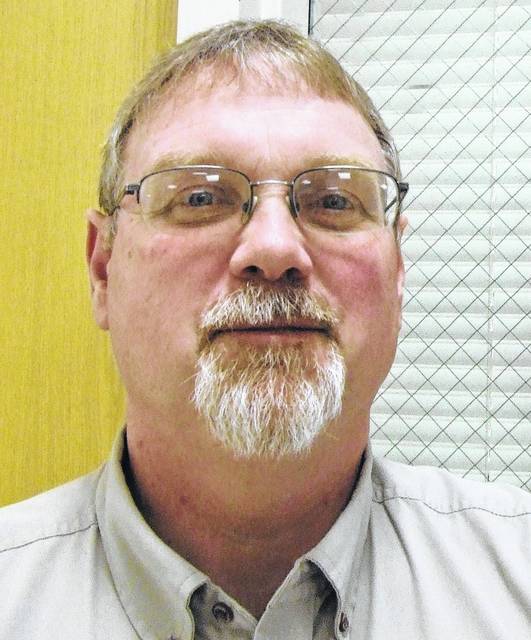
One more time, let’s recognize agriculture and celebrate our agricultural communities. Farm families and agriculture are the foundation of such places as Clinton County Ohio. I want to personally thank our farm families for all they do!
The theme for National Ag Day 2021 is “Food Brings Everyone to the Table.” On March 23, let’s honor National Agriculture Day and mark a nationwide effort to tell the true story of American agriculture and remind citizens that agriculture is a part of all of us.
The National Ag Day program encourages every American to:
• Understand how food and fiber products are produced.
• Appreciate the role agriculture plays in providing safe, abundant and affordable products
• Value the essential role of agriculture in maintaining a strong economy.
• Acknowledge and consider career opportunities in the agriculture, food and fiber industry.
Seeding and more
As planting season gets closer, our farmers will be busy trying to get the 2021 crop planted and growing towards a successful harvest this fall.
Springtime is always an important time of year to seed forages for hay and pasture production. Early spring provides one of the two preferred times to seed perennial cool-season forages, the other being late summer.
It is important to take the necessary steps towards a successful forage establishment. The following can help you improve your chances for a successful forage establishment:
Check now to make sure soil pH and fertility are in the recommended ranges. Forages are more productive where soil pH is above 6.0, but for alfalfa it should be 6.5 – 6.8.
Soil phosphorus should be at least 20 ppm for grasses and 30 ppm for legumes, while minimum soil potassium should be 100 ppm for sandy soils less than 5 CEC or 120 ppm on all other soils.
If seedings are to include alfalfa, and soil pH is not at least 6.5, it would be best to apply lime now and delay establishing alfalfa until late summer.
Plant high quality seed of known varietal source adapted to our region. Planting “common” seed (variety not stated) usually proves to be a very poor investment, yielding less even in the first or second year and having shorter stand life.
Calibrate forage seeders ahead of time. Seed flow can vary greatly for different varieties and depending on the seed treatment and coatings applied. A good video on this entitled “Drill Calibration” is at https://forages.osu.edu/video/.
Prepare a good seedbed as soon as soils are fit in April. The ideal seedbed for conventional seedings is smooth, firm, and weed-free. Don’t overwork the soil. Too much tillage depletes moisture and increases the risk of surface crusting.
Firm the seedbed before seeding to ensure good seed-soil contact and reduce the rate of drying in the seed zone. Cultipackers and cultimulchers are excellent implements for firming the soil. If residue cover is more than 35% use a no-till drill.
No-till seeding is an excellent choice where soil erosion is a hazard. No-till forage seedings are most successful on silt loam soils with good drainage and are more difficult on clay soils or poorly drained soils.
Try to finish seeding by the end of April in southern Ohio and by the first of May in northern Ohio.
Timely planting gives forage seedlings the jump on weeds and the forages become established before summer stress sets in. Weed pressure increases with later plantings, and forages will not have as strong a root system developed by early summer when conditions can turn dry and hot.
Later plantings also yield less, so if planting is delayed, it might be better to plant a summer annual and establish the perennial forages in August.
Plant seed shallow (¼ to ½ inch deep) in good contact with the soil. Stop and check the actual depth of the seed in the field when you first start planting. This is especially important with no-till drills.
When seeding into a tilled seedbed, drills with press wheels are the best choice. When seeding without press wheels or when broadcasting seed, cultipack before and after dropping the seed, preferably in the same direction the seeder was driven.
In fields with little erosion hazard, direct seedings without a companion crop in the spring allows harvesting two or three crops of high-quality forage in the seeding year, particularly when seeding alfalfa and red clover.
For conventional seedings on erosion prone fields, a small grain companion crop can reduce the erosion hazard and will also help compete with weeds.
Companion crops like oat can also help on soils prone to surface crusting. Companion crops usually increase total forage tonnage in the seeding year, but forage quality will be lower than direct seeded legumes.
During the first 6 to 8 weeks after seeding, scout new seedings weekly for any developing weed or insect problems. Weed competition during the first six weeks is most damaging to stand establishment.
Potato leafhopper damage on legumes in particular can be a concern beginning in late May to early June.
The first harvest of the new seeding should generally be delayed until early flowering of legumes (approximately 60 days after emergence) unless weeds were not controlled adequately and are threatening to smother the stand.
For pure grass seedings, generally harvest after 70 days from planting, unless weeds are encroaching in which case the stand should be clipped earlier to avoid weed seed production.
Tony Nye is the state coordinator for the Ohio State University Extension Small Farm Program and has been an OSU Extension Educator for agriculture and natural resources for over 30 years, currently serving Clinton County and the Miami Valley EERA.


